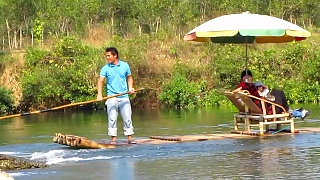 Reality (philosophy, Alan Watts)
Reality (philosophy, Alan Watts)
When a mind is like a mirror, it sees everything, and holds onto nothing.
Chuang-Tzu : '... mind as a mirror; it grasps nothing; it refuses nothing; it receives, but does not keep.'
The wisdom of the eloquent Alan Watts (1915 - 1973) - the insights behind both Taoism and Buddhism ...
[640],shadow=true,start=,stop=
[320],shadow=true,start=,stop=
[320],shadow=true,start=,stop=
[320],shadow=true,start=,stop=
[320],shadow=true,start=,stop=
[320],shadow=true,start=,stop=
[320],shadow=true,start=,stop=
[320],shadow=true,start=,stop=
[320],shadow=true,start=,stop=
[320],shadow=true,start=,stop=
[320],shadow=true,start=,stop=
[320],shadow=true,start=,stop=
[320],shadow=true,start=,stop=
[320],shadow=true,start=,stop=
Related Videos
Featured Videos

|
With The New Atlas ...
Meanwhile ...
BBC - after each Olympic video shows a 'Hate will not win" message (relating to endemic racism in the UK). WHY then, are they endlessly promoting hatred of China ? WHY the incessant stories denigrating China right up to the eve of the opening (and doubtless throughout) ?
2008 - BBC says that the the one and a half lines of subway added for the summer Olympics was simply 'white elephant propaganda show-boating'; YET, now BeiJing has added a further some 20 lines of subway (as was always the plan) to become the world's largest subway metro system. And still the lies go on and on and on. A disgrace to humanity.
At least, now that the hype is so obvious, more and more can see it for what it really is.
Time for this relic of empire to be scrapped. But don't expect "fight for your right, to paaaartyyy" to change anything; or the fake 'opposition'; the elite all know that it is essential in a propaganda war (even if just as a distraction).
|

|
MiuMiu sings three different vocal styles here ... counter point, harmony, alternate lead ... awesome; and a great song ...
The original video by JoySide - Dong Dong Dong ...
Full album version ...
|

|
Beautiful tranquility ...
Filmed by javiagenjo
|

|
January,2017.
|

|
The real XinJiang - don't miss it.
With CGTN ...
|

|
With LiZiQi 李子柒 ...
|

|
With Angelo Giuliano and Brian Berletic / The New Atlas ...
With Jeffrey Sachs ...
Oliver Stone on JFK ...
Glenn Greenwald talks with Vincent Bevins - the CIA, coups and dictatorships, 'anti-communism'.
The threat of a good example - taking care of ALL the people - is a major motivation for a Western elite that desires to retain its extreme privilege ...
Bonus film - with The Geopolitics In Conflict Show ...
In China, the people are family.
In The West, the people are livestock.
|

|
Humans are not designed to eat sugar and refined carbohydrates (more sugar); the illnesses these cause (via insulin resistance) are many and the understanding of the link still not well known.
With Dr. Eric Berg and Ghaida ...
|
Tag search ?
 Reality (philosophy, Alan Watts)
Reality (philosophy, Alan Watts)























